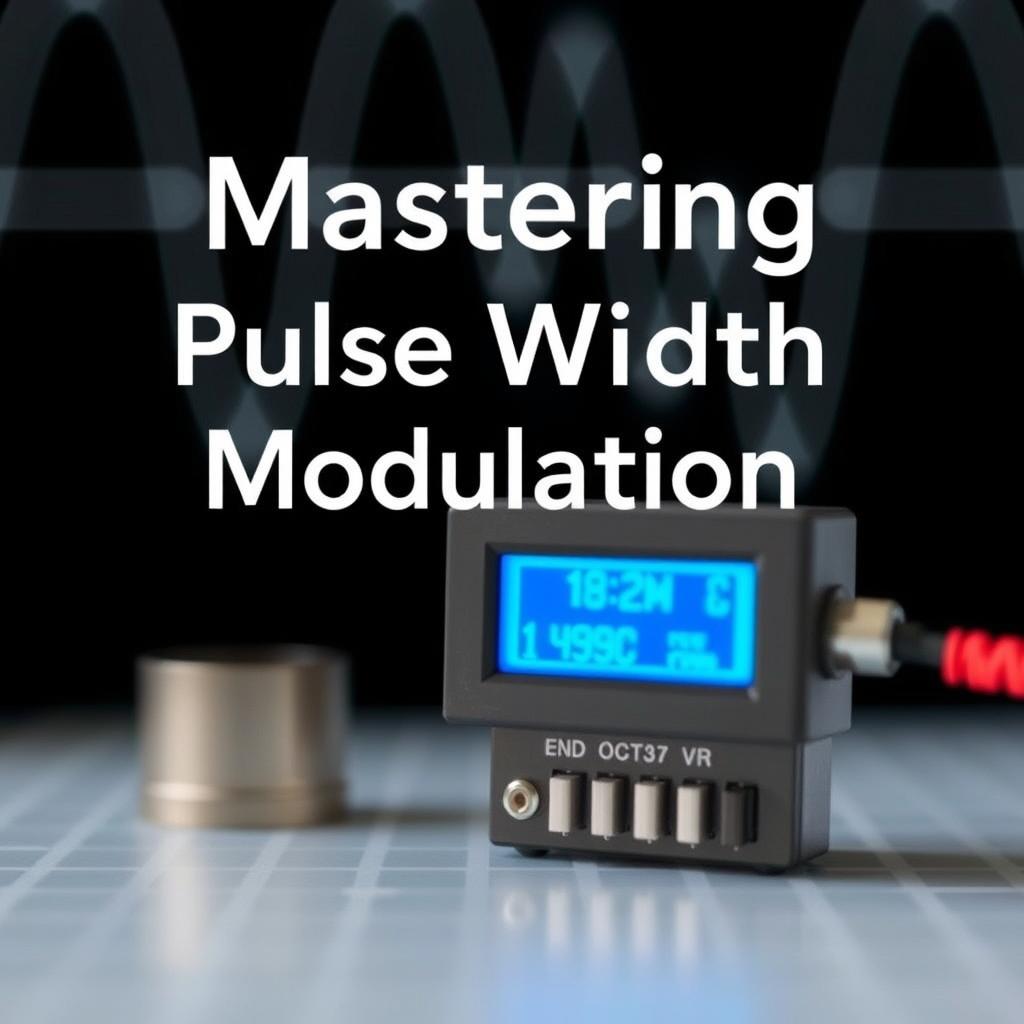Mastering Pulse Width Modulation (PWM)
Ever wondered how digital devices create smooth, analog outputs? The secret lies in Pulse Width Modulation (PWM), a clever technique allowing digital systems to mimic analog behavior. This seemingly simple process has profound implications across various fields, from power supplies to audio generation. This tutorial delves into the fundamentals of PWM, exploring its applications and considerations for optimal performance. We’ll uncover how duty cycle, resolution, and frequency interact, ultimately enabling you to harness the power of PWM in your own projects.
Understanding PWM Fundamentals
At its core, PWM manipulates the width of digital pulses to generate an average voltage that effectively represents an analog value. Imagine a 5-volt power supply; a 50% duty cycle (equal “high” and “low” time) yields an average voltage of 2.5 volts. Adjusting the duty cycle allows for precise control over the average voltage, effectively converting a digital signal into an analog one. The duty cycle is the percentage of ‘high’ time within a complete cycle, while PWM resolution refers to the number of pulses packed within a PWM period (the time length of one complete cycle). The choice of PWM period is crucial and depends on the specific application to achieve optimal results. This flexibility makes PWM invaluable in creating various analog outputs.
PWM Applications: Analog Voltage Generation
A prevalent use of PWM is in power supplies. The PWM resolution must be equal to or higher than the power supply’s resolution requirements. For instance, a 5-volt power supply requiring +/- 1 millivolt accuracy needs a PWM resolution of at least 5000. The resulting PWM signal then undergoes filtering (often with a simple low-pass filter) to minimize ripple, resulting in a smooth, adjustable analog voltage. For example, a PIC microcontroller could generate a 50% duty cycle PWM signal at 5000 Hz, fed into a low-pass filter to produce a stable 2.5-volt output. The filter’s cutoff frequency, determined by its RC components, needs to be appropriately chosen to eliminate high-frequency components while preserving the desired DC level.
PWM for Analog Waveform Generation
PWM’s capabilities extend beyond simple voltage control. It can generate arbitrary waveforms, such as sine waves for audio applications. By sequentially outputting different PWM values, representing points on the desired waveform, a digital system effectively synthesizes an analog signal. Achieving high accuracy demands more points, greater PWM resolution, and heavier filtering. A PIC microcontroller, for instance, can generate decent sine waves in the audio frequency range using a 16-level resolution PWM signal and 16 points on the sine wave. However, the PWM frequency plays a crucial role in the accuracy and smoothness of the generated waveform.
PWM Duty Cycles: On/Off vs. Distributed
Two primary PWM duty cycle approaches exist: ‘on/off’ and ‘distributed’. The ‘on/off’ method delivers a burst of ‘high’ pulses followed by ‘low’ pulses. The ‘distributed’ method, conversely, interleaves ‘high’ and ‘low’ pulses throughout the cycle. While both can produce the same average voltage, the ‘distributed’ method generally offers a smoother output, particularly at higher frequencies. The frequency of each method varies: a ‘on/off’ 50% duty cycle with 16 pulses (8 high, 8 low) might have a frequency of 62.5 kHz, whereas the ‘distributed’ version using the same pulse counts could reach 500 kHz. The higher frequency in the distributed method contributes to a smoother output signal after filtering.
The Significance of PWM Frequency
Choosing the right PWM frequency is critical for effective filtering. The PWM signal, being a high-amplitude digital signal, requires substantial filtering to smooth it. If the PWM frequency nears the target waveform frequency, the filter might attenuate the desired waveform, drastically reducing its amplitude. Therefore, maintaining a much higher PWM frequency than the target waveform is a crucial design guideline. Furthermore, the duty cycle influences filtering effectiveness; low or high duty cycles are generally easier to filter than 50% duty cycles, due to the differing energy content within the pulses.
PWM: Advantages and Limitations
PWM acts as a cost-effective digital-to-analog converter (DAC), particularly advantageous in microcontroller applications. However, it has limitations compared to dedicated DACs: instantaneous voltage output and speed are often compromised. Despite these limitations, PWM remains highly versatile. Besides power supply and waveform generation, it’s also useful for driving relays and solenoids or powering lower-voltage devices from a higher-voltage microcontroller. To improve PWM performance, consider using LC filters (though they are more expensive than RC filters), or employing advanced techniques like combining ‘on/off’ and ‘distributed’ PWM for increased resolution.
Conclusion
Pulse Width Modulation is a powerful technique for generating analog signals from digital sources. Its simplicity and cost-effectiveness make it a crucial tool for many embedded systems and control applications. Understanding the interplay between duty cycle, resolution, and frequency is key to optimizing PWM performance. While limitations exist regarding instantaneous voltage and speed, careful consideration of design parameters and potential enhancements such as advanced filtering and duty cycle strategies enables harnessing PWM’s full potential for various applications. Further exploration of advanced PWM techniques, as mentioned in the original source, may offer additional optimization opportunities.




